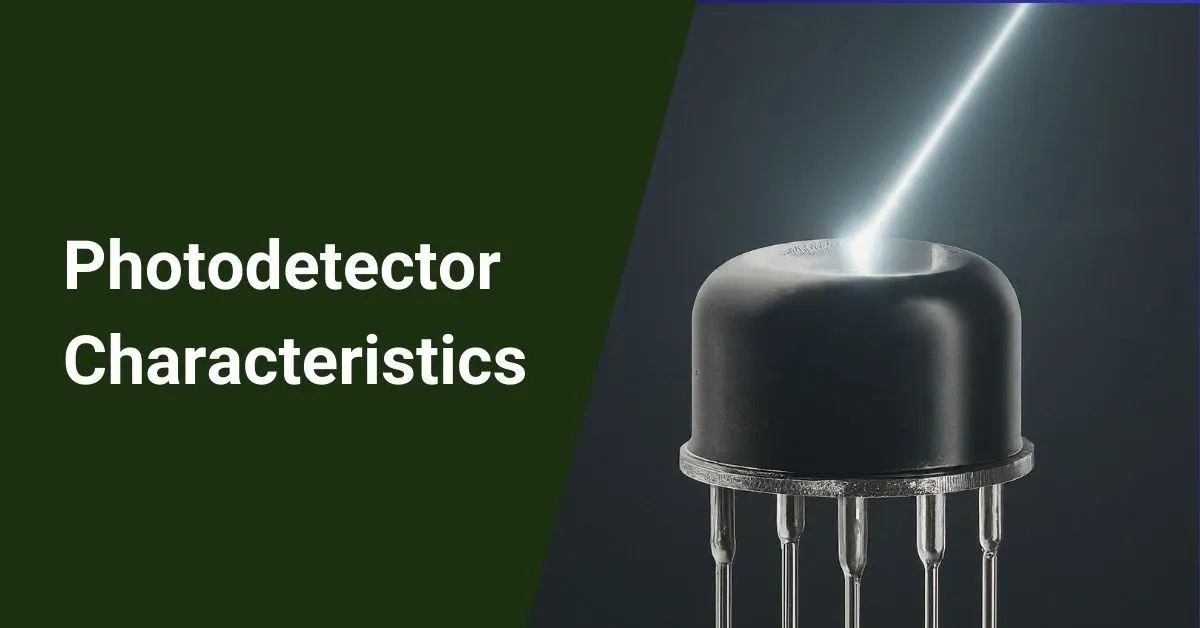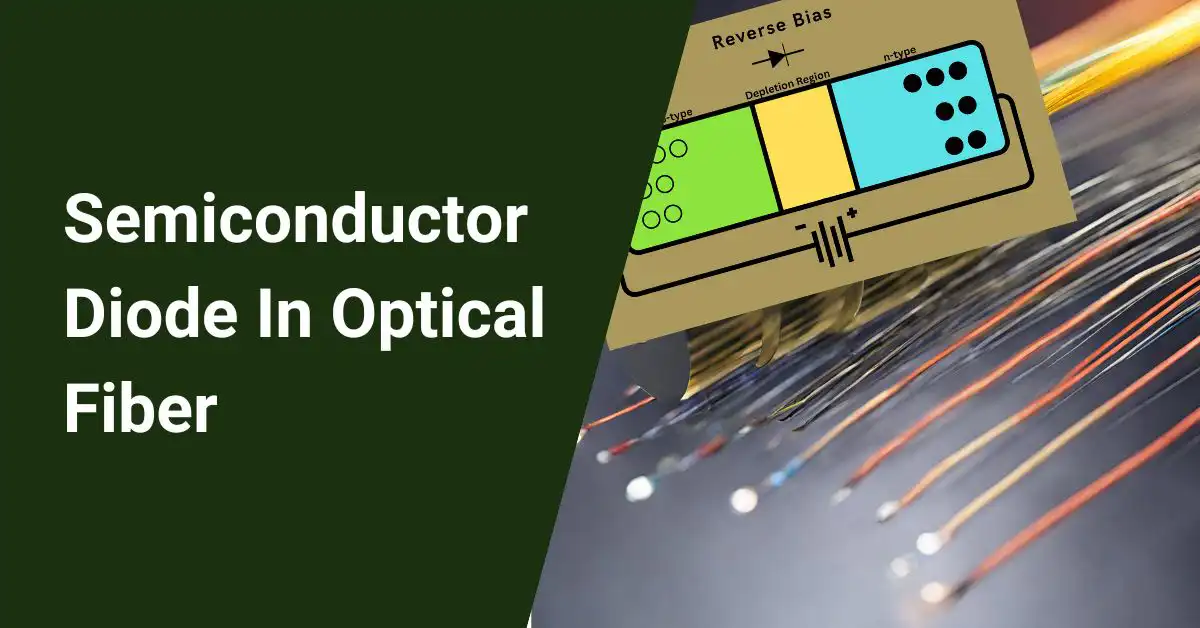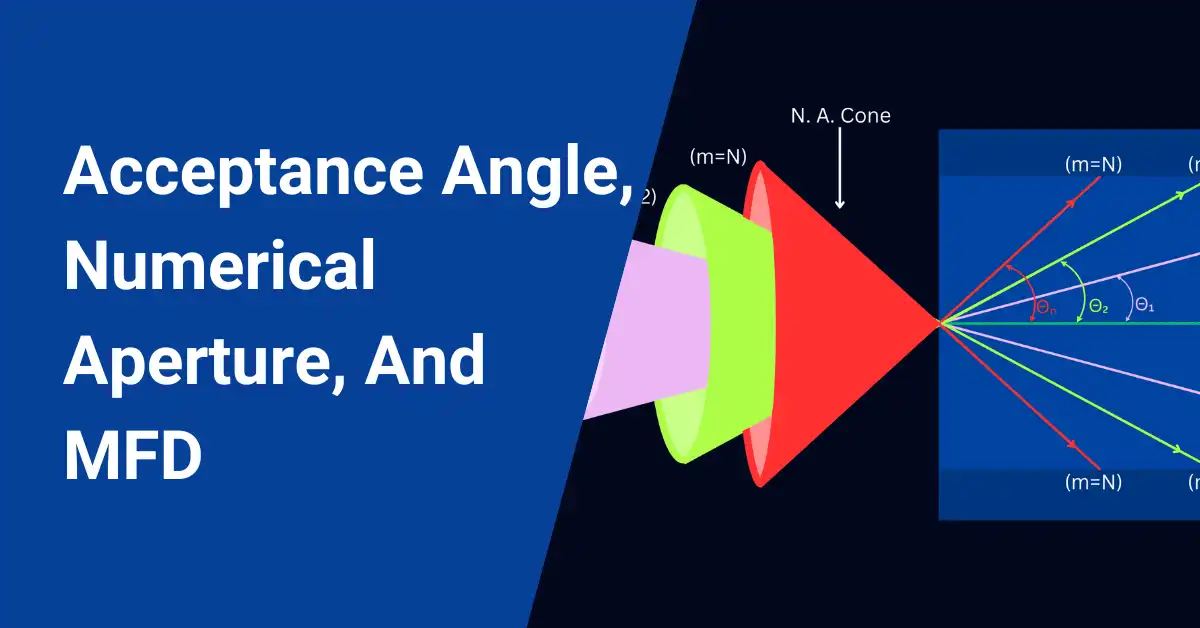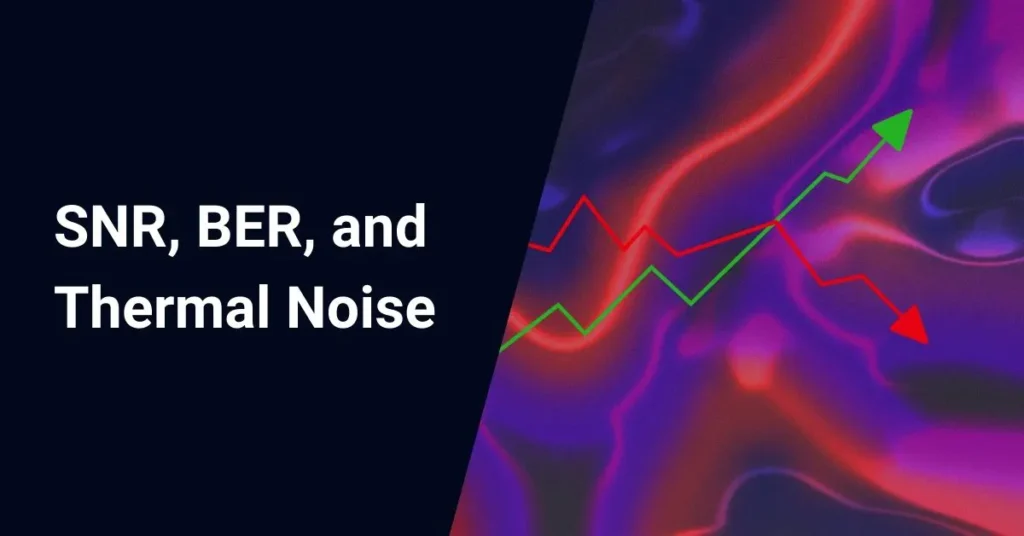Absorption is a fiber optic loss type related to both the material composition and the fabrication process for the fiber. Absorption occurs when light is absorbed and converted into heat by molecules in the fiber core and cladding. Look at the following illustration of the absorption of light inside an optical core.
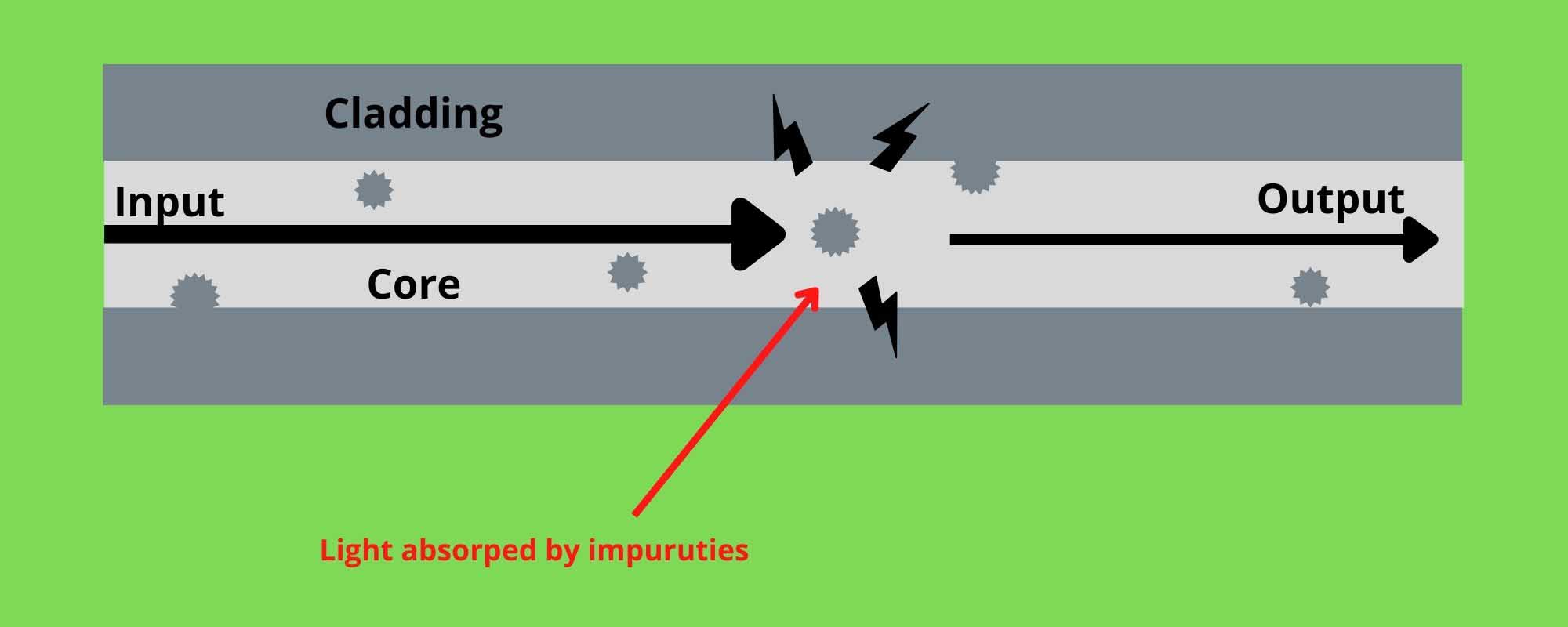
Glass fibers are extremely pure, but some impurities also remain as residue after the purification. These impurities are responsible for the absorption loss in the fiber cable.
Absorption occurs when impurities in the fiber absorb light energy and release it as heat. After the absorption, the light gets “dimmer.”
We can divide the light absorption of optical fiber into three categories.
- Intrinsic absorption
- Extrinsic absorption
Table of Contents
Intrinsic absorption in optical fiber
Intrinsic absorption happens when the optical fiber is completely clean and has no flaws or other messes in it.
There are two mechanisms that lead to the intrinsic absorption of light at optical wavelengths.
Electronic absorption bands in the UV region
The peaks of a fundamental ultraviolet absorption edge are in the ultraviolet wavelength region. It is typically found in the wavelength region between 100 and 400 nanometers (nm). This is caused because the electrons in the glass molecules transition around.
When an electron absorbs a photon of light, the electron is excited to a higher energy level which causes a rise in electron absorption bands. The difference between that electron’s initial and final energy levels is called the energy required to excite the electron. This energy difference is directly related to the wavelength of the light absorbed. This energy difference is measured in electron volts (eV).
Atomic vibration bonds in the near IR region
The vibration of Si-O bonds causes intrinsic absorption in the IR region. Interaction between the vibration bonds and the EM field of the optical signal causes absorption.
Here is a chart showing how the wavelength affects the optical fiber’s absorption loss.

Extrinsic absorption in optical fiber
Extrinsic absorption is caused by impurities present in the fiber material. That can be divided into three categories.
OH- ions
The oxyhydrogen flame used to make glass fibers allows water (in the form of hydroxyl or OH- ions) to be absorbed by the fibers. This is the main cause of the extrinsic loss of optical fiber.
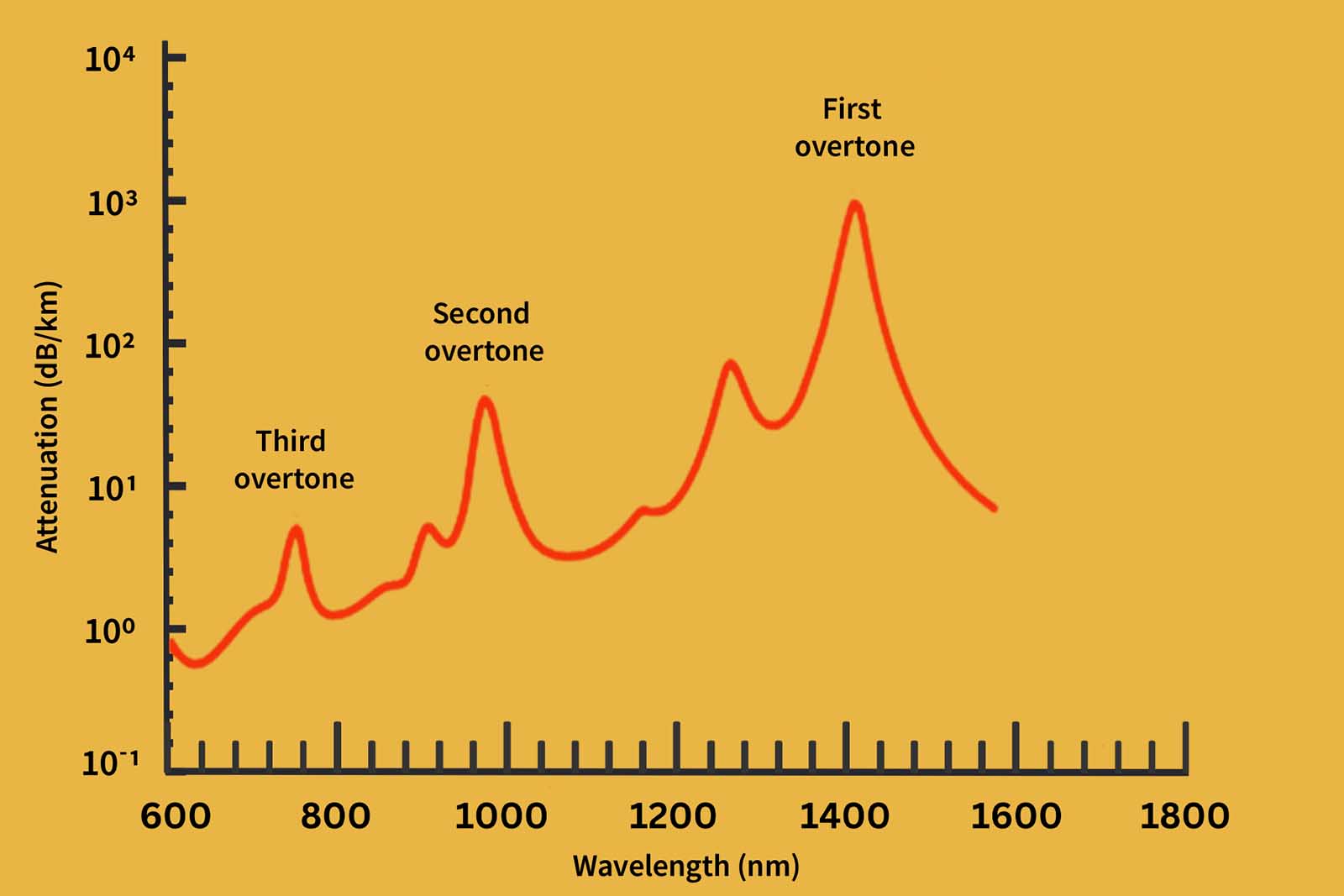
These OH- ions are bonded to the structure of the glass, and molecular vibrations cause absorption peaks at 1380 nm.
Since these OH- absorption peaks are sharp, narrow spectral windows around 1310 nm and 1550 nm are mostly unaffected by OH- absorption.
Most silica-based fibers have an attenuation of about 0.2 dB/km at 1550 nm, which is close to the lowest possible attenuation at this wavelength.
The basic absorption peak of OH- is around 2.7 μm, and the absorption band is in the range of 0.5 to 1.0 μm.
Transition metal impurities such as iron, cobalt, copper, and chromium
This also happens when the charge moves from one iron to another.
Extrinsic absorption happens when these metal impurity ions move from one energy level to another. Losses can be as high as 10 dB per kilometer. We can lessen metal impurities with the help of modern techniques for refining glass. We can ignore the effect of loss caused by impurities for pure silica fiber.
Atomic defect absorption loss
Optical fiber material will be excited to produce atomic defects due to heat or strong radiation, which will cause light absorption and loss, but generally, this effect is very small.
Optical fibers have several atomic defects that cause absorption.
Dopant atoms
Dopant atoms are substances added externally to change the properties of optical fibers. Some dopant atoms, such as germanium and phosphorus, added in this way can absorb light.
Color centers
Color centers are defects in the fiber material. They absorb light either because they have lost electrons or because they have extra electrons.
F-centers
F-centers are defects in fiber materials caused by an extra electron in a cation vacancy. It can absorb light and cause the fiber to lose absorption.
What are the methods of reducing absorption In optical fibers?
Reducing absorption in optical fibers is important for maintaining signal integrity and reducing signal loss. Here are the main methods of reducing absorption in optical fibers:
- Using purer materials
- Highly purified silica can be used to reduce absorption loss in optical fibers. This reduces the amount of extrinsic absorption in a fiber, which is directly proportional to the concentration of impurities in the fiber.
- Dopant engineering
- Adding specific dopants to fiber can reduce intrinsic absorption. For example, adding germanium to a silica fiber can reduce the absorption of infrared light.
- Wavelength selection
- Using wavelengths less susceptible to absorption can help reduce overall attenuation in optical fibers. For example, 1550 nm is often used for long-distance communication because it is less susceptible to absorption than other wavelengths.
- Erbium-doped fiber amplifiers
- EDFAs can be used to amplify optical signals that have been attenuated by absorption. Erbium is a rare-earth element with a high absorption coefficient for light at 1550 nm, making it an ideal material for optical amplifiers.
By using these methods, absorption loss in optical fibers can be significantly reduced, allowing for more efficient transmission of information over longer distances.
Summary
Absorption causes fiber signal decay as light converts to heat upon interacting with impurities. This dissipative loss erodes power according to contaminant concentrations and composition.
Intrinsically, absorption arises from electron excitation by ultraviolet photons and bond vibration interacting with near-infrared waves. Extrinsically, hydroxyl ions generate prominent attenuation around 1380nm, while transition metals induce defects absorbing across the spectrum.
Minimizing these degradation pathways necessitates superior material purification, removing contaminants inducing color centers or unwanted atomic defects. Dopant optimization resists native bandgaps, shifting sensitive wavelengths from peaks.
Strategic wavelength picking to exploit transmission windows preserves signal strength. Where attenuation overwhelms, Erbium-doped amplifiers regenerate power, forestalling decay over lengthened runs. Addressing the origins of intrusion preserves light energy, bolstering transmission distances.
FAQ
How does material absorption affect the attenuation of optical fibers?
Material absorption in optical fibers directly impacts the attenuation of the light signal. Attenuation refers to the loss of optical power as light travels through the fiber. The primary absorbers are residual OH+ and dopants in the glass, leading to absorption at specific wavelengths. Scattering is another cause of attenuation, occurring when light collides with atoms in the glass. To mitigate absorption loss, low-absorption coefficient materials like highly purified silica can be used, and reducing impurities, such as OH ions, helps minimize absorption loss in dry fiber.
What are the 3 types of attenuation in optical fiber?
The three types of attenuation in optical fiber are distance attenuation, frequency attenuation, and signal reflection. Distance attenuation results from light spreading over a larger area as it travels through the fiber, proportional to the fiber’s length, and can be reduced using signal repeaters or amplifiers. Frequency attenuation occurs at specific wavelengths due to material absorption caused by impurities like hydrogen ions and can be minimized with highly purified silica. Signal reflection happens when light is reflected back toward the source due to refractive index changes, which can be reduced using specialized connectors and splices.
What causes most fiber optic attenuation and absorption?
The most significant causes of fiber optic attenuation are absorption and scattering losses. Absorption can be intrinsic, resulting from interactions with impurities in the fiber’s material composition, such as hydrogen ions, or extrinsic, caused by impurities introduced during manufacturing. Extrinsic absorption, especially from transition-metal impurities, is more significant and can absorb light in the 0.6 to 1.6 micrometers wavelength range. Scattering losses occur when light collides with glass atoms, leading to anisotropic scattering, and are also influenced by the light’s wavelength.
What is the relation between absorption and attenuation?
Absorption is a significant contributor to attenuation in optical fibers. Attenuation is the optical power loss as light travels through the fiber, caused by absorption, scattering, and bending. Absorption happens when light energy converts to heat due to molecules in the glass, with primary absorbers being residual OH+ and dopants altering the refractive index. Absorption occurs at specific wavelengths, mainly around 1000 nm, 1400 nm, and above 1600 nm. Intrinsic and extrinsic attenuation are forms of attenuation, where intrinsic is due to natural impurities like hydrogen ions, and extrinsic is due to external factors like manufacturing impurities, including transition-metal impurities.



